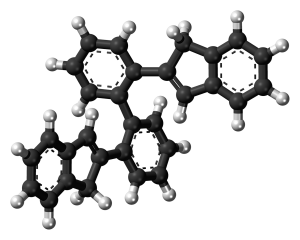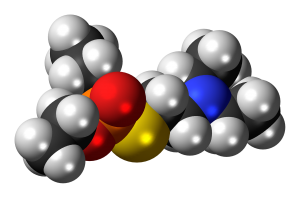 ACTION B1: KEY ELEMENT 1:
ACTION B1: KEY ELEMENT 1:
Engaging key Replication and Transfer (R&T) Partners, assessing R&T Partners’ resources and capacities for AP&P chemicals monitoring and developing an R&T Plan
Beneficiary responsible for implementation: Naturalis
OBJECTIVES:
(1) to identify, and secure engagement of, relevant R&T Partners;
(2) to assess R&T Partners’ resources and capacities for AP&P chemicals monitoring;
(3) to develop an R&T Plan;
(4) to provide general support to ongoing R&T engagement.
 ACTION B2: KEY ELEMENT 2:
ACTION B2: KEY ELEMENT 2:
Reviewing and harmonizing quality assurance (QA) for AP&P sampling, sample processing and archiving and for their chemical analysis
Beneficiary responsible for implementation: Environmental Institute
OBJECTIVES:
(1) to review and harmonise quality assurance (QA) criteria, measures and protocols for AP&P sampling, sample processing and archiving by both ESBs and NHMs;
(2) to develop guidance for the analysis (targeted analysis, non-target screening analysis) of contaminants in these samples;
(3) to develop guidance for users to assess the quality of AP&P chemical monitoring data.
 ACTION B3: KEY ELEMENT 3:
ACTION B3: KEY ELEMENT 3:
Enhancing access to relevant AP&P samples and related contaminant data, and enhancing compatibility and interoperability of data, through an APEX Knowledge Base
Beneficiary responsible for implementation: Environmental Institute
OBJECTIVES:
(1) to develop a European ‘AP&P Knowledge Base’ to enhance access to AP&P samples and to contaminant data in AP&P samples.
This will involve developing a web-based, open access database, with three linked modules:
– Module 1: APEX Samples Database – data on available AP&P samples and sampling programmes;
– Module 2: APEX Target Analyses Database – data from targeted analyses of AP&P samples;
– Module 3: APEX Non-target Screening (NTS) Analyses Database – data from NTS analyses of AP&P samples.
 ACTION B4: DEMONSTRATOR 1:
ACTION B4: DEMONSTRATOR 1:
Revealing presence of chemical contaminants in AP&P samples through target and non-target screening (NTS) analyses
Beneficiary responsible for implementation: Environmental Institute
OBJECTIVES:
(1) to demonstrate how state-of-the-art chemical screening can be used to detect presence of wide-scope chemicals in AP&P samples.
 ACTION B5: DEMONSTRATOR 2:
ACTION B5: DEMONSTRATOR 2:
Prioritisation of the most relevant contaminants in AP&P samples and assessment of the applicability of such monitoring data for PBT assessment in the European regulatory context
Beneficiary responsible for implementation: German Environment Agency
OBJECTIVES:
(1) to demonstrate how wide-scope chemical screening data can be prioritised to select the most relevant substances for development of further hazard (PBT) assessment under REACH and BPR.
 ACTION B6: DEMONSTRATOR 3:
ACTION B6: DEMONSTRATOR 3:
Demonstrating use of raptor chemical monitoring data to assess impact and effectiveness of risk mitigation measures at national and European scales
Beneficiary responsible for implementation: Centre for Ecology & Hydrology
OBJECTIVES:
(1) to show that chemical monitoring data from raptor samples from ESBs and NHMs can be used for wide-scale assessment of chemical risk mitigation measures (RMM);
(2) to identify key issues in using ESB samples, show that NHM samples can usefully complement ESB samples and develop guidelines for tracking changes in chemical concentrations in AP&P samples, taking into account sample pooling (to ensure monitoring is cost-effective, tractable and affordable) and scalability (national to pan-European).
 ACTION B7: DEMONSTRATOR 4:
ACTION B7: DEMONSTRATOR 4:
Defining predominant chemical mixtures in AP&P samples
Beneficiary responsible for implementation: Environmental Institute
OBJECTIVES:
(1) to demonstrate how data obtained from national and Europe-wide screening campaigns can be used to identify predominant chemical mixtures of concern.
 ACTION C1:
ACTION C1:
Monitoring the impact of the project actions in relation to the specified performance indicators
Beneficiary responsible for implementation: Environmental Institute
OBJECTIVES:
(1) to monitor outputs and impacts of the action in relation to selected LIFE Performance Indicators and LIFE APEX Project Specific Indicators.
 ACTION D1:
ACTION D1:
Development of general dissemination and communications strategy and implementation of the strategy’s actions
Beneficiary responsible for implementation: Environmental Institute
OBJECTIVES:
(1) to develop a project dissemination and communications strategy and to implement the strategy’s actions.
 ACTION D2:
ACTION D2:
Networking with key users to promote regulatory and market uptake of LIFE APEX approaches and outputs
Beneficiary responsible for implementation: German Environment Agency
OBJECTIVES:
(1) to network with key users (regulators, industry) to promote regulatory and market uptake of LIFE APEX approaches and outputs, including harmonized approaches and guidance for sampling, processing, archiving and analysis of AP&P samples, the AP&P Knowledge Base, and the approaches of the four Demonstrators.
 ACTION E1:
ACTION E1:
Project management, risk management and administration and After-LIFE Plan
Beneficiary responsible for implementation: Environmental Institute
(1) to ensure robust project management, risk management and administration, for the smooth and timely implementation of the project in accordance with LIFE rules.

